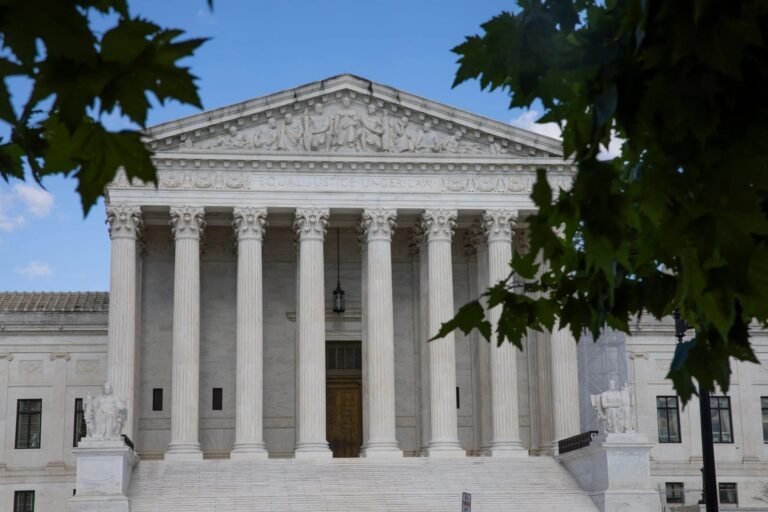On Tuesday, Nov. 4, in Coney Island Auto Parts Unlimited Inc. v. Burton, the Supreme Court will consider a disagreement among the federal courts of appeals over whether there is a time limit for setting aside a judgment as void for lack of personal jurisdiction – that is, because the trial court did not have the authority to exercise power over the litigant.
The dispute stems from bankruptcy proceedings that began in Tennessee more than a decade ago. Creditors of Vista-Pro Automotive LLC at first planned to liquidate Vista-Pro, but, by February 2015, they had shifted their focus to restructuring. As part of this process, they filed adversary proceedings (lawsuits separate from the main bankruptcy case) against companies that owed Vista-Pro money for unpaid invoices, including Coney Island Auto Parts Unlimited, Inc.
Coney Island did not respond to the complaint in the adversary proceeding, so Vista-Pro asked the Tennessee bankruptcy court for a default judgment. The court granted that request, ordering the company to pay “$48,696.21, plus $7.00 per diem,” according to Coney Island’s brief on the merits. Soon after that judgment was handed down, the Vista-Pro case was converted back to a liquidation proceeding, and Jeanne Burton was appointed as trustee. For the next five years, Burton worked to get the money from Coney Island, but the company didn’t respond, according to her brief.
In October 2021, Coney Island initiated legal action in New York after Burton registered the Tennessee bankruptcy court’s judgment there and got a hold placed on Coney Island’s bank account. The company contended that the New York bankruptcy court should vacate the judgment against it as void. Specifically, Coney Island alleged that the 2015 complaint was served improperly and that, as a result, the Tennessee bankruptcy court did not have personal jurisdiction to issue its judgment.
The New York bankruptcy court declined to intervene, and, on appeal, so did a U.S. district court. Both said Coney Island needed to address the matter in Tennessee. In July 2022, seven years after the Tennessee bankruptcy court issued the default judgment against it, Coney Island filed a motion there to vacate the judgment.
The Tennessee bankruptcy court denied the motion, citing a past ruling from the U.S. Court of Appeals for the 6th Circuit on Federal Rule of Civil Procedure 60(c)(1) to explain its decision. While Rule 60(b)(4) authorizes courts to vacate a void judgment, the 6th Circuit has held that Rule 60(c)(1) places a time limit on that process by stating that a “motion under Rule 60(b) must be made within a reasonable time.” “Even if Coney Island can succeed in showing that the judgment is otherwise void due to improper service, its request to set aside the judgment must be denied based solely on the timeliness problem,” the Tennessee bankruptcy court said.
The Tennessee bankruptcy court’s ruling acknowledged a division among the federal courts of appeals over the application of Rule 60(c)(1), noting that some circuits have said that the timeliness requirement does not apply to judgments deemed to be void. Coney Island emphasized this split in its petition to the Supreme Court after a district court and the 6th Circuit upheld the Tennessee bankruptcy court’s decision.
In its brief on the merits, Coney Island presents the 6th Circuit’s interpretation of Rule 60(c)(1) as problematic and urges the justices to push that court to accept the view taken by every other appellate court. “If a judgment is void immediately upon entry, how could the passage of time vivify it?,” the company asks. It describes such judgments as a “legal nullity” and said that, for hundreds of years, courts have recognized them as such.
Coney Island also contends that it would not sow chaos to grant defendants an unlimited amount of time to challenge judgments as void. If the judgment is vacated because of an error, litigants will be able to correct the error and reinstate their claim. There’s also nothing preventing litigants from serving documents properly the first time, Coney Island added.
In her own filing, Burton describes the case as simple. “A ‘reasonable time’ does not mean any time, no matter how unreasonable,” she wrote. Burton contends that “the plain text of Rule 60” supports the 6th Circuit’s interpretation and that similar time limits “permeate the law.” “Rule 60’s time limit does not resuscitate void judgments any more than appeal deadlines cure trial errors. Rule 60(c)(1) simply obligates parties seeking relief from void judgments to do so within a reasonable time,” she contended.
Burton characterizes Coney Island’s delay in the case as “inexplicable,” and urges the court to affirm the 6th Circuit’s decision. Giving defendants unlimited time to move to vacate a judgment against them would undermine bankruptcy law, which is meant to bring about “the ‘prompt and effectual’ resolution of bankruptcy cases,” she contends, and allow for unfair gamesmanship. “Defendants who were on notice of the proceedings or judgments could nevertheless unreasonably delay in seeking relief, waiting until key witnesses are dead or cannot recollect essential events and evidence is lost or destroyed,” Burton wrote.
At oral arguments, the justices almost certainly will press each side to further explain the potential consequences of a ruling for the other party and the nature of a void judgment. The court’s eventual decision is expected by early July at the very latest.
Cases: Coney Island Auto Parts Unlimited, Inc. v. Burton
Recommended Citation:
Kelsey Dallas,
Is there a time limit on vacating a void judgment?,
SCOTUSblog (Oct. 30, 2025, 10:00 AM),
https://www.scotusblog.com/2025/10/is-there-a-time-limit-on-vacating-a-void-judgment/

